Evolution of the Facelift : A 100 Year March to the Mini Facelift Surgery23 min read


Dr. Phillip Chang
#1 Rated Plastic Surgeon
Offices in Leesburg, Virginia
The last several decades have seen significant growth in facial aesthetic surgery. Not just in regard to the number of surgeries, but the quality of procedures, as well. Consistent improvements in both surgical technique and treatment strategies have progressed naturally over time. These advancements stem from a greater understanding of both facial anatomy and the aging process.
This live educational video shows a live surgery ; and may be too graphic for some readers
Evolution of the most common Facelift Techniques
Few procedures have seen as much innovation over the years as the facelift. So much so that it’s hard to believe the facelift is just over 100 years old.
The evolution of the modern facelift technique can be categorized into six key stages:
Direct Skin Excision
The original and most straight-forward form of plastic surgery.
Subcutaneous Facelifts
A procedure where the skin is elevated, then relaxed, then elevated again. Since skin is elastic and stretches after the lift, these procedures tended not to last.
SMAS Facelifts
This procedure is where the thick fibrous layer below the skin is elevated along with the skin. Because the SMAS fibrous layer has more strength than skin, elevating the SMAS provides a longer lasting result.
Deep Plane Facelifts
This is a procedure which dives further into the face’s tissue in order to divide certain facial ligaments and allow more extensive tissue elevation.
Subperiosteal Facelifts
This is the deepest form of facial plastic surgery. Using techniques learned from reconstructive plastic surgery, this is a procedure where all of the regional tissue is elevated off of the bone then as a whole unit.
Return to Sanity Facelifts - The Mini Facelifts
Modern cosmetic facial surgery has simultaneously experienced radical growth since its inception while also retaining many of the same underlying concepts. The SMAS facelift which is augmented through a fat transfer (or facial fillers) and Laser Skin Treatments has regained its popularity. The approach which Dr. Chang developed minimizes recovery and rejuvenates the face in a more natural and intuitive way. He does this by addressing the natural elements of facial aging. The strategy is to replace the volume lost during the aging process. It creates minimal but effective elevation of the skin (if needed) with a mini facelift, elevation of the SMAS, and rejuvenation of the skin with lasers and BBL treatments.
Ready For A Younger Face?
The First Facelift Techniques
While aesthetic surgery is relatively commonplace and socially acceptable in modern society, its early-20th century beginnings were quite secretive. The pioneers of modern cosmetic surgery often performed their surgeries in private clinics and purposely mis-labeled cases on operative logs to avoid discovery. Academic publication of surgical techniques was avoided for years. Unfortunately, that means that the true origin of the facelift procedure is unknown. What we do know is that surgeons in both Europe and America were employing early facelift techniques by the early 1900’s.
Competing claims of having performed the first facelift also began in the early 1900’s. Two surgeons, Eugen von Hollande and Erich Lexar, both claim to have been the first. These two surgeons, in addition to other European plastic surgeons have claimed to be the first surgeons to introduce the facelift surgery. Their claims, however, are poorly documented and came several years to decades after they purportedly invented the facelift surgery.
It also might have actually been a third doctor altogether: an American dermatologist named John Woodbury.
Dr. Eugen Hollande - a skin only excision
Eugen vol Hollande didn’t publish his claim to fame until he reported completing an Elliptical Skin Excision in a chapter of his writing entitled Cosmetic Surgery in 1912. He doesn’t mention the date of the actual procedure in this chapter, which is admittedly a bit suspicious. He exclusively references that he made elliptical skin excisions in natural skin folds near the patient’s hairline and ears.
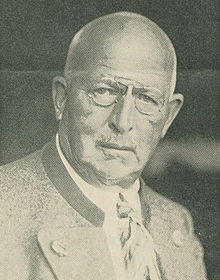

Dr. Erik Lexar
Erik Lexar, a German surgeon, made similarly confusing claims. He reported the completion of s-shaped excisions in the temporal region and elliptical incisions along the forehead and hairline for an actress in 1906. Similar to Hollande, Lexar did not report his claim until years later in 1931.
Lexar is also attributed with the introduction of the forehead lift surgery and the breast reduction surgery. Additionally, he was a pioneer of the subcutaneous mastectomy surgery for fibrocystic breast disease. John Paul Getty, the first billionaire of the modern age, was one of Lexar’s patients.
Dr. Raymond Passot
In 1919, Dr. Raymond Passot published one of the first papers on surgical face lifts, primarily emphasizing the process of elevating and resetting the facial skin.
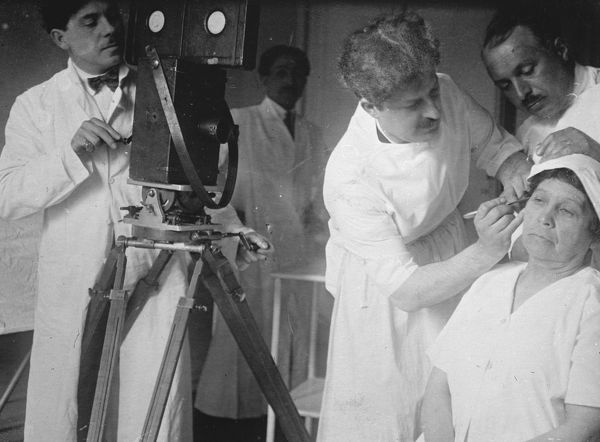

Dr Suzanne Noel’s “Petite Operation”
Suzanne Noel was a French, female plastic surgeon. She published in a book in 1926 describing facialplasty, blepharoplasty, and forehead and neck lifts. Noel’s most significant contribution was her introduction and popularization of a procedure she referred to as the “petite operation.” She repeatedly performed the operation on the affluent French aristocracy.
Surgeries at that time were not discussed. Over time, more and more clients sought surgical methods to help hide the difficult years from their faces and the procedures slowly garnered attention.
Woodbury - An American Dermatologist May Have Performed the First Facelift
Meanwhile, John Woodbury may actually have been the first surgeon to introduce the facelift procedure. An American entrepreneur, Woodbury claimed that he was a “dermatologist.”
Between 1870 and 1909, John Woodbury built an empire of cosmetic surgery clinics across 6 states. He employed nearly 25 physician and surgeons throughout these clinics. It’s even believed that Woodbury had an advertising budget of around $150,000/year (1892 data). Yet despite his previous claim, at the end of his career, Woodbury admitted in court that he was not a doctor at all. Was he truly a doctor at all?
Other cosmetic procedures that Woodbury likely "invented"
Woodbury reportedly performed multiple facial cosmetic surgeries including early versions of:
• Facelifts
• Browlifts
• Frown excisions
• Lower facelifts
• Mid-face lifts
• Rhinoplasties
• Double-chin reductions
• Dimple creations
Woodbury even sold a line of soap to Jergens
In addition, Woodbury developed a proprietary soap and cosmetic line. He sold the line to Jergens for $212,500 in 1901 with a 10% royalty. Woodbury′s story has been largely unknown until recently, when the Nonacademic curated a collection of his published articles and advertisements in a lay magazine rather than an academic journal.
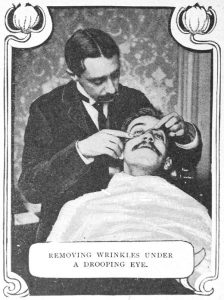

Woodbury ends up bankrupt
Sadly, Woodbury′s life ended in bankruptcy, litigation, and suicide when the corporate practice of medicine and advertising were made illegal in the United States. During the legal proceedings, Woodbury conceded that he was not a doctor. Regardless of their veracity, his surgical innovations are of major historical significance.
These cosmetic procedures were the first of their kind to be recorded in either lay or academic publication. They predate – by decades – the previously held “earliest known cosmetic surgeries” in the United States.
Ready For A Younger Face?
Development of Modern Surgical Techniques
The evolution from the original skin-only facelift procedures toward the more modern surgical techniques, (also knowns as the SMAS period) occurred between 1970 and 1980. The original facelift techniques were, for the most part, skin only excision techniques similar to how we might remove a mole today. Because these original procedures elevated only the skin, the results were not long-lasting. This was the problem with the modern Lifestyle Lift procedure (which was discontinued due to poorly lasting results).
Eventually, surgeons came to better understand not only the anatomy, but the tissue’s role in offsetting the natural elasticity of the skin as well.
Modern Techniques Address the Underlying Tissue:
In 1968, Tord Skoog is credited with the first description of facelifting that included dissection of the strong deeper fascial layers rather than relying on skin tension to achieve the facelift. He published this technique in 1974: subfascial dissection of the platysma without detaching the skin in a posterior direction.
He described dissection of the superficial fascia of the face – which he termed the “buccal fascia” – in continuity with the platysma in the neck (really the SMAS). At the completion of the dissection, the flap was repositioned in a superoposterior direction and secured to the parotidomasseteric and mastoid fascia. Interestingly, variations of this are the techniques that are most commonly performed today.
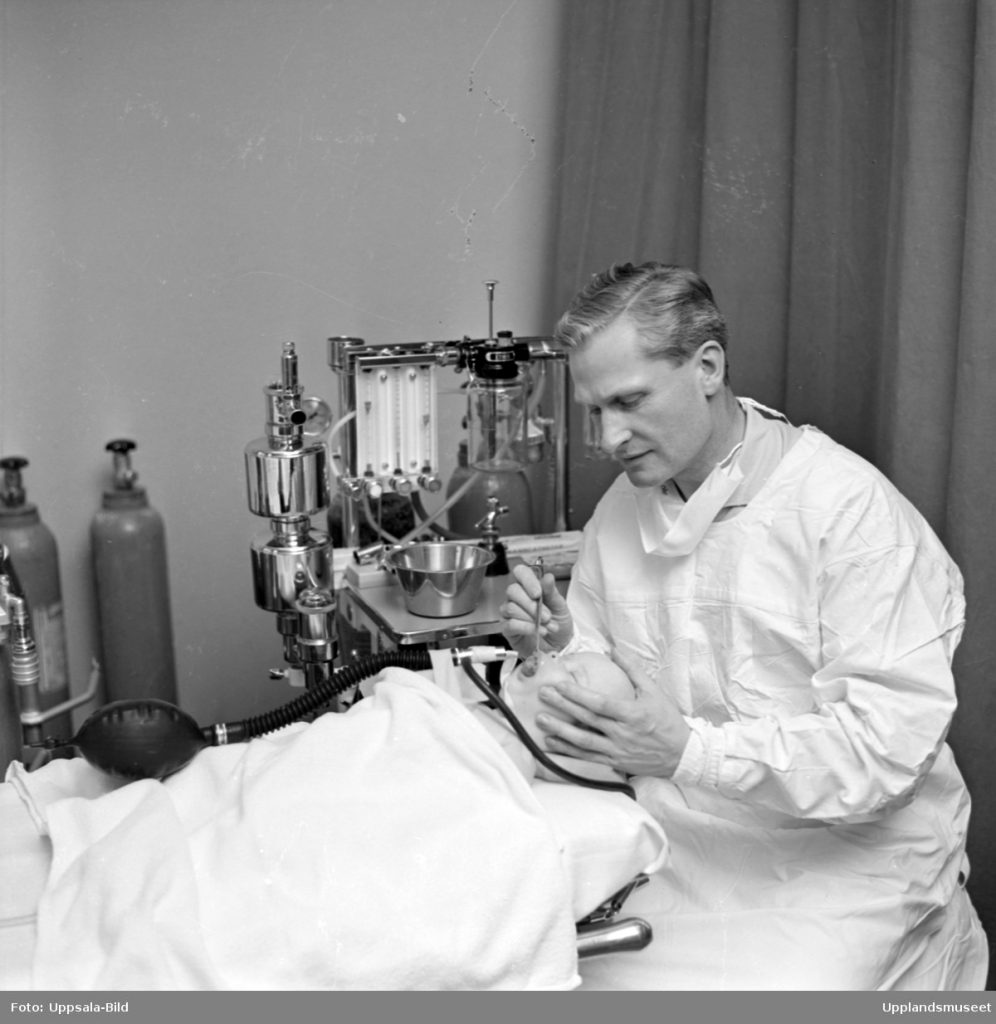

Introduction of the SMAS Facelift Technique
In 1976, after they had become familiar with Skoog’s technique, Mitz and Peyronie gave the first definitive description of the strong fascial layer including the skin and fat. They called it the superficial musculoaponeurotic system or SMAS. (The term SMAS was coined by Paul Tessier.) They noted that this layer extended from the temples through the face and into the neck. In the temple, the surgery is referred to as the temporoparietal fascia. In the face, it is referred to as the SMAS. In the neck, it is the platysma.
Mitz and Peyronie showed that not only was this layer thick and strong but that elevation of the SMAS in the face could also elevate the neck. After Skoog died of a heart attack, the superficial muscular aponeurotic system (SMAS) concept rapidly emerged to become the standard face-lifting technique. This was the first innovative change in facelift surgery in over 50 years.
Introduction of the Deep Plane Facelift Technique
Dr. Paul Tessier Developed the Subperiosteal Facelift Paul Tessier introduced the subperiosteal facelift in 1979. Tessier made his name in the treatment of pediatric skull abnormalities and used a subperiosteal dissection to approach his pediatric patients. He demonstrated that the subperiosteal undermining of the superior and lateral orbital rims allowed for the elevation of the soft tissue and eyebrows. This delivered better results than the classic face-lifting. The objective was to elevate the soft tissue over the underlying skeleton to re-establish the patient’s youthful appearance.
In 1989, Furnas described the ligaments of the midface. Knowledge of the midfacial ligaments provided an improved understanding of the support system of the facial soft tissues and the role they played in the aging process. He showed that division of these elements could allow for further elevation of the facial tissues with less tension.
In the 1990s, Sam Hamra popularized a procedure he called the Deep Plane Facelift. The technique called for the division of the retaining ligament release at a level below the SMAS (sub-SMAS). The recovery period of 2 to 3 months was longer than most other procedures and had considerably more complications.
The Evolution of the Modern Facelift Technique
Most modern facelift techniques evolved with a better understanding of the importance of facial volume to the aging process. This is true in terms of a general loss of fat volume in the face as well as research from CT scans that the facial bones also resorb with age.
These observations accelerated the development of facial fillers such as Juvederm, Voluma, Restylane, Sculptra, and Fat Transfers that could provide volume to the aging face.
A second development of these techniques was the commercialization and cosmetic use of Botox to reduce some facial wrinkles that were caused by hyperactive facial muscles.
A third development was the advancement in the technology of facial lasers and devices like Sciton’s Laser Platform. It has the ability to reduce brown age and sun spots (Forever Young BBL), smooth fine lines (Profractional and Fraxel Technology), or even reduce deep facial wrinkles (Laser Resurfacing).
Evolution of the Mini ( Minimal Incision ) Facelift
These technological advances led to the next advancement in facelift surgery, which in reality, was a move ‘back to the future.’ Instead of more invasive procedures attempting to pull the skin tighter and tighter, procedures like the mini-facelift were developed. Ultimately, most of these modern procedures are a variation of Skoog’s SMAS facelift (see above).
Ready For A Younger Face?
There are many minimal incision facelift procedures available in the modern era. In 1999, Ziya Saylan developed the S-lift procedure. This procedure used incisions around the ear that looked like an S but Saylan was also able to elevate the SMAS up to the temple and zygomatic bone to provide stability.
Daniel Baker, a well-known contemporary plastic surgeon, developed his short scar facelift in the early 2000s. The MACs Facelift is another minimal incision facelift that lifts the soft tissue more vertically than other procedures. Like the others, there is significantly less recovery time than older, more invasive techniques.
Finding the Best Facelift Surgeon in Virginia
Dr. Phillip Chang is known to be one of the best plastic surgeons in Virginia after performing hundreds of cosmetic surgery procedures for almost 20 years. His innovative techniques have been highlighted in national magazines and educational channels prompting patients across the country to send revision cosmetic procedures to his office in Northern Virginia outside of Washington, DC.
Visit his office in Leesburg, Virginia in Loudoun County or fill out the contact form below for more information on how we can help you with your facelift surgery.
Let Us Help You!
Our office can provide you will helpful information, schedule a free consultation, and walk you through the process of having the procedure covered by your insurance.
Contact Dr. Chang’s Office:
FAQs
Most frequent questions and answers
There is not necessarily a “right” time to get a facelift surgery. Just like the concept of beauty is subjective, the concept of facial aging can also be subjective. Facial aging begins with a loss of collagen and volume loss before the skin begins to sag. Therefore, nonsurgical options that add facial volume is usually a first step in treating facial aging. This is mostly true if you are in your thirties and early forties. As you get older, volume loss is more dramatic, collagen begins to stretch. The strategy at this time is to optimize facial volume and lifting the extra sagging tissue. The average age for a mini facelift is about 40 years old.
Facelift techniques continue to evolve. The marketing of plastic surgery has unfortunately led to an explosion of confusing vanity names such as the lifestyle lift, the miami facelift, or a dozen other names. At the end of the day, there are really only a few types. The choice of facelift technique depends on a number of factors including your skin quality, facial shape, age, and goals.
- Skin only facelifts
- SMAS elevation facelifts
- Deep plane facelift and
- Subperiosteal facelifts
There is not necessarily a single best technique. My technique is more of a strategic approach. My goals are to produce a natural result that reproduces the components of aging in the safest way possible. I do this by first replacing volume with either fat or cosmetic fillers, then I lift and reposition the deep support tissues ( SMAS) along with redraping of the skin to achieve long lasting results. This is followed by rejuvenating the skin with lasers and treating the facial muscles with Botox.
Facelift surgery is a technically demanding procedure that requires the highest level of surgical skill. It is imperative that the surgeon be highly skilled and experienced. It is also important to note that no single technique is appropriate or “best” for all patients and that facelift surgery should be individualized for each patient depending on their goals and facial characteristics.
The mini facelift is performed and reposition the deep support tissues ( SMAS) along with redraping of the skin to achieve long lasting results. The goal of the procedure is to lift the jowls upwards thereby restoring volume to the cheeks while improving the jaw line. You can generally also expect a modest improvement in the neck. If you want more significant improvements in the neck, a neck lift will have to be added to the procedure. This would be called a face and neck lift.
The goal of the facelift is to redrape the skin and SMAS. This might restore some volume in to the cheeks but more significant volumes will require the addition of a fat transfer or cosmetic fillers.
Volume is most often required in the temples, the under-eye area, the cheek mound, and the area in and around the lips.
Botox can be added to address the forehead lines, the angry lines between the brows, and the crows feet lines. Not only does the botox treatment improve the appearance of aging, but it will preserve the longevity of the results by not allowing the skin to shift as fast over time.
Skin care lasers including the Forever Young BBL, Micropeel, and Profractional Laser can help with improving the glow and radiance of the skin by reducing brown and age spots, fine lines, and wrinkles. They also help maintain your results by increasing and rejuvenating cellular DNA and collagen.
The answer will depend on exactly what procedures are added to the facelift procedure. Some general guidelines include:
- Minifacelift – 5-7 days
- Add facial fillers – no change
- Add botox – no change
- Add fat transfer – 2-3 weeks
- Add BBL – no change
- Add Forehead Lift – 2-3 weeks
- Add Neck Lift – 2-3 weeks
After the surgery, you will need to avoid active activities for 3-4 weeks. You may start earlier but with the understanding that activity has the potential to prolong swelling and bruising
Feeling normal can vary as it is subjective. Although most patients will not have a lot of pain, most patients will feel some soreness for about 2 weeks. Minor swelling may continue for about 2 to 3 months.
1 year. It will take about a full year and more for your scar to completely whiten, fade, and flatten. For this reason, scar revision procedures will not be performed for a full year. Because the nature and quality of your scars depends on many factors outside of the surgeon’s control, scar revision procedures will require a small surgical fee.
Patients have a choice between oral sedation or general anesthesia. The benefit of general anesthesia is obviously the ability to be put to sleep for the entire procedure; you wake up and the procedure is done. The downside of general anesthesia, however, is the additional costs and some people don’t like the thought of being put under.
Many patients will choose to have their procedure under oral sedation. These patients will have a oral cocktail of valium and pain medicine to start the procedure. Once the patient feels calm, the area that will be worked on will be injected with long-acting pain medications similar to going to the dentist. They choose this option because of some cost savings and the ability to avoid being put under. The recovery is easier and there is in general less swelling. The downside, obviously, is that you are awake for the procedure. Most patients find it very tolerable because of the calming effects of the valium
The risks of a facelift surgery are similar to the risks of any surgery. They will also depend on if you are having any additional procedures at the same time. The general risks include
- blood collections or hematomas
- delayed healing, and
- infections.
Complete symmetry cannot be expected. Some relapse particularly in the neck is common. Scar visibility depends on many factors outside our control and may occur.
Common complaints include:
- scar visibility
- mild relapse particularly in the neck
- suture infections
- numbness on the cheek in front of the ear
Mild relapse particularly in the neck is common. Swelling will artificially make the skin look tighter and fuller than it is. You will notice that immediately after the procedure, I would not have been able to pull the tissue any tighter without risking a pulled appearance or healing problems. What I have been known for over time has been the ability to create for you a natural result with minimal risk.
Suture infections are common. General infections are very uncommon. Suture infections are usually due to the deep strong absorbable sutures. These sutures are placed to give strength to the skin closure which will produce a better appearing scar. If these sutures do not absorb fast enough, the body will sometimes reject them and push them to the surface where they can get infected. The solution, however, is easy. These sutures are simply cut at the surface and cleansed with either peroxide or surgical soap.
Numbness in front of the ear is universal. All patients will have this experience. It will go away in about 3 to 6 months.
Roughly 60 to 70 percent of patients will have their facelift procedures in the office under local anesthesia and oral sedation. The most common reasons are cost and the avoidance of having general anesthesia.
About 60 percent of my patients have a mini facelift making it the most common procedure that I perform.
- Mini Facelift – 60%
- Face and Neck lift- 30%
- Quick Lift – 10%
Anything that decreases the break-down of collagen will help preserve the benefits of your facelift procedure. Anything the decreases the movement or stretch of the tissue will help preserve the collagen in your tissue. In addition, there are some techniques and options to adding or rejuvenating your existing collagen.
Botox – Botox stops the dynamic facial muscles from working. Treatment of the glabellar lines between the eyes ( that normally pull the brows down ) keeps the brows elevated for longer. Treatment of the crows feet lines ( that also normally pull the brows down ) keeps the brows elevated for longer but also prevent the movement of the thin skin around the eyelids and temple. Fat volume is better preserved in the temple while the eyelid skin does not stretch and break down as fast.
Facial Fillers like Juvederm or Voluma – Facial fillers will distend the facial skin so that there is less movement. Less movement will in turn slow the breakdown of the tissue collagen and therefore slow down facial aging
Facial Lasers and Skin Care – Facial lasers including the Forever Young BBL, Micro Laser Peel, and the Profractional not only treat the visible effects of aging including the brown spots, fine lines and wrinkles, but they all add and reorganize collagen. Adding collagen will slow down facial aging
Fat Transfer- Fat transfer can be thought of as a natural facial filler. One of the benefits that fat cells contain stem cells that continue to stimulate cell growth as well as stimulating the production of collagen
Sculptra- Sculptra is another facial filler. It is unique amongst the facial fillers in its ability to stimulate the production of your own collagen.
PRP- PRP stands for Plasma Rich Protein. It is a technique that includes taking and processing your own blood to extract growth factors and stem cells that are located in your platelets. After extracting the factors, they are re-injected either into skin and tissue to stimulate the growth of your own collagen.
More Articles For You


Should I Consider a Mini Facelift In My 30s?
Turning 30 is more than just a milestone age; it’s often a time of reflection
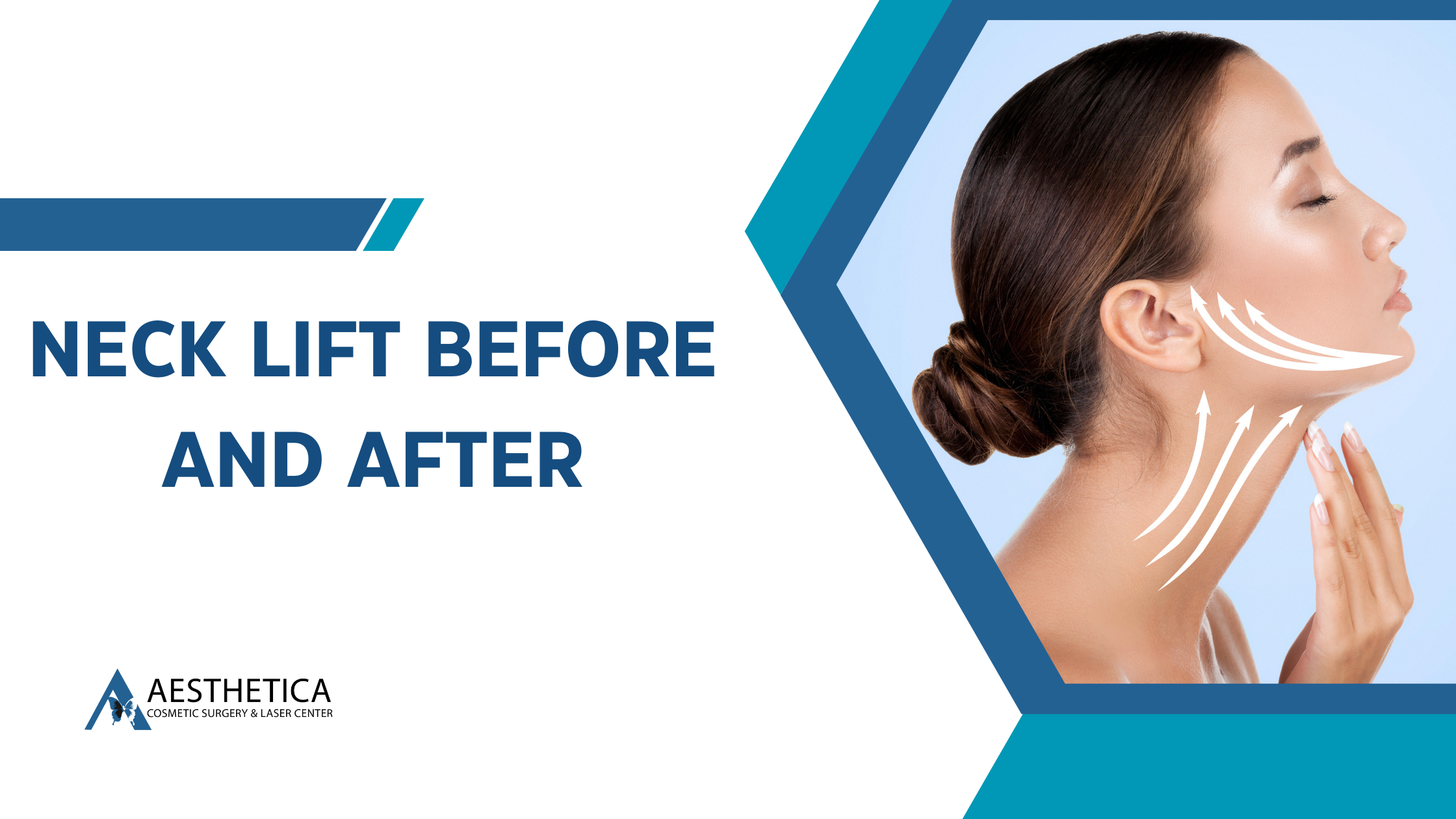

Neck Lift Before and After
Often sought by those looking to rejuvenate their appearance, focuses on one of the most


DAXXIFY: The Before and After
Embarking on a cosmetic treatment journey with DAXXIFY holds anticipation, and questions but most importantly


Xeomin vs. BOTOX: How to Pick the Right One for You
The choice between Xeomin and BOTOX can be as perplexing as choosing the perfect outfit


